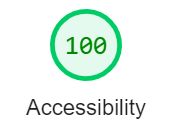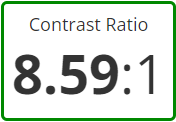What is web accessibility?
People with a range of disabilities may have extra requirements when using websites. At present, disabled people are 50% more likely to face barriers accessing digital and online services compared to non-disabled people[1], and accessibility errors are slowly going up[2].
In the UK, 1 in 4 people are disabled, and 71% of users with disabilities say they will leave a website if it is not accessible[3]. So making sure your charity’s website is accessible can help you reach as many people as possible.
Here are a few examples of how disabilities can affect how people use a website:
- People with visual impairments may need the following:
- The ability to increase the size of the text on the website to make it easier to read
- To be able to access text descriptions of any visual information such as pictures
- To have a high level of contrast between foreground and background colours
- To be able to use a screen magnifier
- To be able to use a screen reader to read out the text on the website
- For colour-blind users it is important that information isn’t conveyed only using colour
- People who have difficulties with their hands may need:
- Larger areas to click on for links and buttons
- To be able to navigate around the website using the keyboard instead of the mouse
- To be able to use speech recognition software to interact with the website
- People with hearing loss may need captions or text transcripts for videos or other audio content
- People with dyslexia, learning difficulties or lower literacy levels may need:
- Content written using the simplest wording possible
- Clearly laid out content optimised for skim reading
- Consistent use of design elements and visual clues to help them find their way through the site
The Web Content Accessibility Guidelines (WCAG) are a set of standards that help website developers and content writers to make sure the sites they create are accessible to people with disabilities.
How can I test for accessibility?
There are various tools online that can test some elements of accessibility on a website, but other areas will need to be check manually.
Checking your accessibility score
 You can enter the address of your website on Google page speed to see a range of metrics, including an accessibility score. This can tell you how well your website performs on a subset of accessibility issues, and highlight which areas have problems. Please note that this only tests a single page of your website, so it is best to test multiple pages from your website to get a more comprehensive view of how accessible your website is.
You can enter the address of your website on Google page speed to see a range of metrics, including an accessibility score. This can tell you how well your website performs on a subset of accessibility issues, and highlight which areas have problems. Please note that this only tests a single page of your website, so it is best to test multiple pages from your website to get a more comprehensive view of how accessible your website is.
Testing your wording
You can test how easy to read your text is by using www.webfx.com/tools/read-able/, which will give you a reading age for the text on a page. Again, make sure to test multiple pages from your website to get a clearer view of how easy to read your text is. Microsoft word also give a Flesch-Kincaid Grade Level, which you can interpret using this conversion table.
Testing your colours
 If you are choosing colours for your website or branding, you can check if they will meet accessibility guidelines with a checker such as Web Aim - we recommend at least AA compliance to make sure your website is accessible to most visitors.
If you are choosing colours for your website or branding, you can check if they will meet accessibility guidelines with a checker such as Web Aim - we recommend at least AA compliance to make sure your website is accessible to most visitors.
Testing for screen readers
The best way to do this is to have a go with a screen reader and see how easy it is to use your website. You can see a range of tools available for testing here.
Manual checks
- Try increasing the size of the font in your browser by 200% and looking through your website to see if everything still looks OK. Please note you need to change the text size, not zoom in.
- Navigate around your website without using the mouse. Use the tab button on your keyboard to move between links and buttons on your page. Can you get to all the links? Can you tell which link is currently highlighted?
This list is not comprehensive, but should give you a good sense of how well your charity’s website works for disabled visitors.
Alternatively, here at eonic.digital we offer a free accessibility review of your existing website, to let you know of any barriers your disabled users might face.
Please contact us on 01273 761 586 to book your review.
[1]https://business.scope.org.uk/article/accessibility-and-disability-facts-and-figures
[2]The WebAIM annual accessibility analysis of the top 1 million homepages
[3]https://webaim.org/projects/million/
[4]https://userway.org/blog/disability-statistics/#:~:text=What%20is%20the%20current%20state,accessible%20to%20people%20with%20disabilities.


